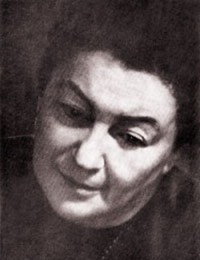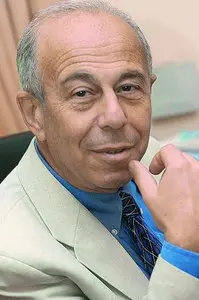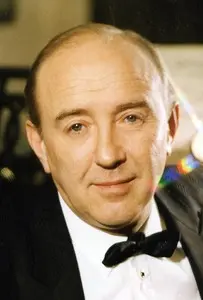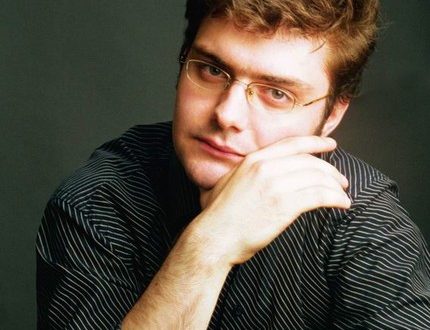
Maria Izrailevna Grinberg |
Maria Grinberg

“I love in her performance creativity her invariably inherent clarity of thought, real insight into the meaning of music, infallible taste … then the harmony of musical images, a good sense of form, a beautiful charming sound, sound not as an end in itself, but as the main means of expression, a complete technique, however without a shadow of “virtuosity”. I also note in her game the seriousness, the noble concentration of thoughts and feelings … “
- Piano music in the Ozon online store →
Many music lovers who are familiar with the art of Maria Grinberg will certainly agree with this assessment of G. G. Neuhaus. In this, one might say, all-encompassing characteristic, I would like to highlight the word “harmony”. Indeed, the artistic image of Maria Grinberg conquered with its integrity and at the same time versatility. As researchers of the pianist’s work note, this last circumstance is largely due to the influence of those teachers with whom Grinberg studied at the Moscow Conservatory. Arriving from Odessa (her teacher until 1925 was D. S. Aizberg), she entered the class of F. M., Blumenfeld; later, K. N. Igumnov became its leader, in whose class Grinberg graduated from the conservatory in 1933. In 1933-1935, she took a postgraduate course with Igumnov (a school of higher skill, as it was called at that time). And if from F. M. Blumenfeld the young artist “borrowed” variety in the best sense of the word, a large-scale approach to solving interpretive problems, then from K. N. Igumnov, Grinberg inherited stylistic sensitivity, mastery of sound.
An important stage in the artistic development of the pianist was the Second All-Union Competition of Performing Musicians (1935): Grinberg won the second prize. The competition marked the beginning of her wide concert activity. However, the pianist’s ascent to the “musical Olympus” was by no means easy. According to the fair remark of J. Milshtein, “there are performers who do not immediately receive a correct and exhaustive assessment … They grow gradually, experiencing not only the joy of victories, but also the bitterness of defeats. But on the other hand, they grow organically, steadily and reach the highest heights of art over the years. Maria Grinberg belongs to such performers.
Like any great musician, her repertoire, enriched from year to year, was very wide, and it is rather difficult to speak in a restrictive sense about the pianist’s repertoire tendencies. At different stages of artistic development, she was attracted to different layers of music. And yet … Back in the mid-30s, A. Alschwang emphasized that the ideal for Grinberg was the classical art. Her constant companions are Bach, Scarlatti, Mozart, Beethoven. Not without reason, in the season when the pianist’s 60th birthday was celebrated, she held a concert cycle, which included all Beethoven’s piano sonatas. Reviewing already the first concerts of the cycle, K. Adzhemov noted: “Grinberg’s interpretation is completely outside of academicism. The performance at any given moment is marked by the unique originality of the pianist’s individuality, while the slightest shades of Beethoven’s musical notation are accurately revealed in the transmission. The familiar text gets a new life with the power of the artist’s inspiration. It conquers the fascination with music-making, the truthful, sincere tone, the inflexible will and, most importantly, the vivid imagery.” The validity of these words can be seen even now by listening to the recording of all Beethoven’s sonatas, made by the pianist in the 70s. Evaluating this wonderful work, N. Yudenich wrote: “Grinberg’s art is fraught with energy of enormous power. By appealing to the best spiritual qualities of the listener, it evokes a powerful and joyful response. The irresistibility of the impact of the pianist’s performance is explained primarily by intonational persuasiveness, “distinctness” (to use Glinka’s expression), the clarity of each turn, passage, theme, and, ultimately, the endearing truthfulness of the expression. Grinberg introduces the listener into the beautiful world of Beethoven’s sonatas simply, without affectation, without a sense of distance separating the experienced artist from the inexperienced listener. Immediacy, sincerity are manifested in the original intonation freshness of the performance.
Intonational freshness… A very accurate definition that explains the reason for the constant impact on the audience of Maria Grinberg’s game. How did she get it. Perhaps the main secret lay in the “general” creative principle of the pianist, which she once formulated as follows: “If we want to continue to live in any work, we must experience it as if it were written in our time.”
Of course, over the long concert years, Greenberg has repeatedly played the music of romantics – Schubert, Schumann, Liszt, Chopin and others. But it was precisely on this basis that, according to the apt observation of one of the critics, qualitative changes occurred in the artistic style of the artist. In a review by D. Rabinovich (1961) we read: “Today you can’t say that intellectualism, which is a permanent property of M. Grinberg’s talent, still sometimes takes precedence over her sincere immediacy. A few years ago, her performance more often delighted than touched. There was a “chill” in the performance of M. Grinberg, which became especially noticeable when the pianist turned to Chopin, Brahms, Rachmaninoff. Now she fully reveals herself not only in classical music, which has long brought her the most impressive creative victories, but also in romantic music.”
Greenberg often included compositions in her programs that were little known to a wide audience and almost never found on concert posters. So, in one of her Moscow performances, works by Telemann, Graun, Soler, Seixas and other composers of the XNUMXth century sounded. We can also name the half-forgotten plays by Wiese, Lyadov and Glazunov, Tchaikovsky’s Second Concerto, one of whose zealous propagandists in our time has become Maria Grinberg.
Soviet music also had a sincere friend in her person. As one example of her attention to contemporary musical creativity, a whole program of sonatas by Soviet authors, prepared for the 30th anniversary of October, can serve: Second – by S. Prokofiev, Third – by D. Kabalevsky, Fourth – by V. Bely, Third – by M. Weinberg . She performed many compositions by D. Shostakovich, B. Shekhter, A. Lokshin.
In the ensembles, the artist’s partners were vocalists N. Dorliak, A. Dolivo, S. Yakovenko, her daughter, pianist N. Zabavnikova. We add to this that Greenberg wrote numerous arrangements and arrangements for two pianos. The pianist began her pedagogical work in 1959 at the Gnessin Institute, and in 1970 she received the title of professor.
Maria Grinberg made a significant contribution to the development of Soviet performing arts. In a short obituary signed by T. Khrennikov, G. Sviridov and S. Richter, there are also the following words: “The scale of her talent lies in the enormous power of direct influence, combined with exceptional depth of thought, the highest level of artistry and pianistic skill. Her individual interpretation of almost every piece she performs, her ability to “read” the composer’s idea in a new way, opened up new and new artistic horizons.
Lit .: Milshtein Ya. Maria Grinberg. – M., 1958; Rabinovich D. Portraits of pianists. – M., 1970.
Grigoriev L., Platek Ya.





